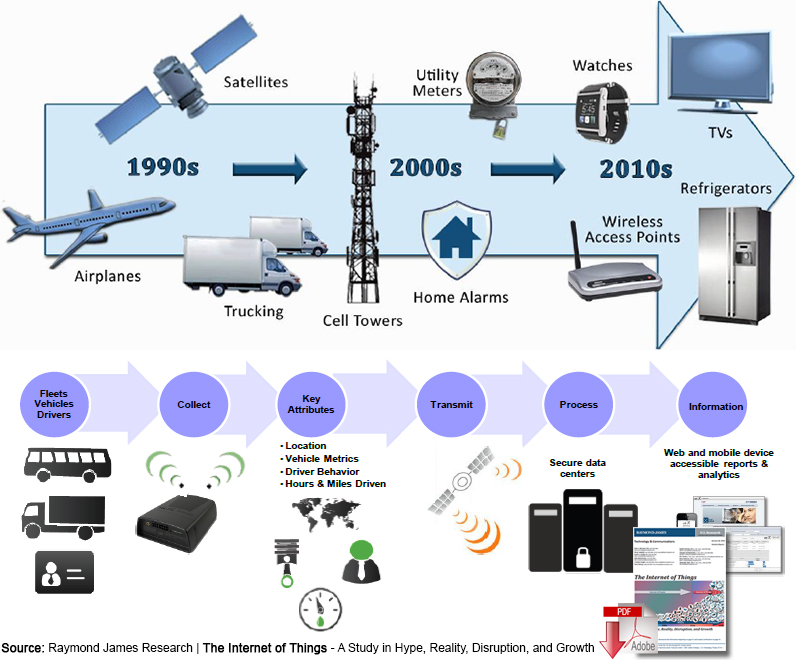26 Billion Internet of Things Installed Will Alter How the Future Supply Chain Operates
By 2020 the Internet of Things (IoT) will include 26 billion units, creating new challenges for all aspects of the data center, and will significantly alter supply chain operations, leader information access, and cyber-risk exposure.
The future explosion in the number of intelligent devices will create a network rich with information that allows supply chains to assemble and communicate in new ways.
Gartner forecasts that a 30-fold increase in Internet-connected physical devices by 2020 will significantly alter supply chain leader information access and cyber-risk exposure.
The Internet of Things (IoT) is forecast to reach 26 billion installed units by 2020, up from 0.9 billion just five years ago, and will impact the information available to supply chain leaders and how the supply chain operates, depending on industry.
“It’s important to put IoT maturity into perspective, because of the fast pace at which it is emerging, so supply chain strategists need to be looking at its potential now,” says Michael Burkett, managing vice president at Gartner. “Some IoT devices are more mature, such as commercial telematics now used in trucking fleets to improve logistics efficiency. Some, such as smart fabrics that use sensors within clothing and industrial fabrics to monitor human health or manufacturing processes, are just emerging.”
As these capabilities become mainstream they will allow modern supply chains to deliver more differentiated service to customers more efficiently. This will happen when many more physical assets than today are communicating their state to a networked ecosystem that then formulates an intelligent response.
Gartner believes that a double-digit increase in digital marketing investment will provide supply chain leaders with deeper market insight, as well as fulfillment challenges in industries where more granular market segments are targeted.
Practitioners observe, however that designing connected experiences requires the integration of very different development skill sets and processes.
“First, you need hardware production, which calls for product design and engineering in a linear, often lengthy development cycle. Second, you need digital and software design, which happens in short, modular development loops and requires support from different kinds of designers (for example, specialists in user interaction) and programmers,” says Gordon Hui, who leads the Business Design & Strategy practice at Smart Design in San Francisco.
Writing in the Harvard Business Review, Hui notes that while both hardware and software depend on good design to succeed, the approaches are like night and day.
“….and being great at designing for pixels does not easily translate to being great at designing for atoms,” he adds.
But Gartner maintains that digital marketing budgets are expected to continue to increase in 2014. A rapid move to digital marketing has direct implications for the supply chain, particularly for consumer product industries with rapid cycles of go-to-market and promotional activity. B2B industries adopting digital channels to reach customers will also be affected.
Marketers are segmenting audiences, understanding what they want and then building customer experiences around their commerce sites. There will be increased fragmentation of demand as digital marketing targets finer market segments in search of differentiating value propositions to end users, customers and consumers.
Using digital channels for product launches, seasonal promotions and other initiatives, marketers are conducting campaigns and communications across multiple channels, and adjusting promotions depending on results.
“Supply chain leaders must design their processes to operate in this digital business world,” says Burkett. “This includes fulfilling the new expectations of customers and the volatile demands that digital marketing will create.
A future supply chain will meet those expectations by converging people, business and things in a digital value network, and incorporating fast-emerging capabilities such as IoT and smart machines into this design strategy.”
Related: The Internet of Everything – Four Technologies We’ll Actually Use within 3 Years














